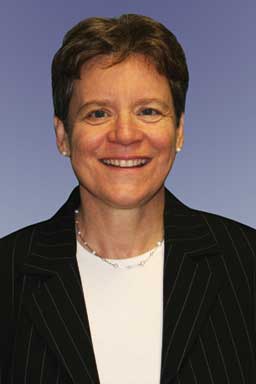From the Executive Editor
 Have your cake and eat
it, too!
Have your cake and eat
it, too!
Cate Dewey, DVM, MSc, PhD
Authors often tell us that they can hardly recognize their final manuscript published in the Journal of Swine Health and Production (JSHAP) as the one they originally sent in for review. It is principally thanks to Dr Judi Bell, our associate editor, who helps authors edit and polish the document so their message is clear. The peer-review process also prompts substantial changes in many manuscripts. The authors may have not provided sufficient detail in the materials and methods section for the reader to completely understand how the study was conducted. Perhaps the random allocation of pigs to treatment was not described or how and why pigs were withdrawn from the study was omitted. Frequently, authors do not fully describe the statistical analyses – for example, whether the study was done at the pig or the pen level, what model was used, what co-variables were included in the model, and how the final model was evaluated.
The authors may over-extrapolate their results. It is human nature to believe the results of a study are significant and answer broad industry questions. However, we have to be very careful to limit the discussion and implications within the confines of the scope of the study. At times, the writing is just unclear. I recently received the peer reviewers’ comments on one of my own submissions. Both reviewers had serious concerns about one paragraph in the discussion. When I re-read the paragraph, the problem was obvious. I was trying to include too many ideas in a short number of sentences. It was hard to understand the focal point of the paragraph. The edited paragraph is now completely changed.
Each autumn, Karen Richardson is contacted by eager veterinary
students wanting to discuss the abstract they are asked to submit
for the proceedings book for the annual AASV meeting. Their
question is this: “If I publish an abstract in the AASV
proceedings book, will I still be eligible to publish in
JSHAP ?” My answer is
“yes.”
I am confident that the abstract and a published, peer-reviewed manuscript will not be the same, even if they are based on the same study. To begin with, an abstract often summarizes preliminary results and may include only a subset of the final data. The abstract may not include sufficient detail in the materials and methods section for the reader to reproduce the study exactly. When we read the abstract, we often make assumptions about what was done and then hope the results and conclusions are valid. Ideally, a peer-reviewed manuscript is written so that the reader can completely reproduce the scientific study.
I think that students, and indeed all persons who give presentations at the AASV conference, should include an abstract in the proceedings book. It is a good source of information during the conference and provides a reference when the members return home. It may be the readers’ only access to that information until the peer-reviewed manuscript is published. However, ultimately, the scientific material needs to undergo the scrutiny of a team of reviewers.
Before I became editor of JSHAP, it was my journal of choice for publishing my own research work. It was the only journal that I was confident would be read by swine practitioners and applied researchers. If I wanted my research results to be used in the “real world,” I believed that JSHAP was the place to publish. I still do. However, I also think that it is a conflict of interest to publish my own first-author papers in this journal. Therefore, I find other journals that I hope are read or accessed by my chosen audience. I did have the experience of being “stung” by having a student publish an abstract in the AASV proceedings. I subsequently attempted to publish the same study in a peer-reviewed journal. The editor of that journal told me that he would reject my paper because I had already published in the AASV proceedings. Fortunately, the AASV abstract was based on a smaller data set and did not include all of the analyses in the final paper. From this experience, I learned to live by the adage “When in doubt – leave something out.” That is the advice I give hesitant veterinary students. I encourage them to publish their abstract in the AASV proceedings, but to be sure that some significant part of the results is not included in the abstract. By following this system, they will always have something novel to offer to the editor.
Are we doing a disservice to the members of the AASV by
publishing research work in the proceedings book and then later in
JSHAP ? I do not think so. A scientific
manuscript that undergoes the scrutiny of several peer reviewers
and a member of our editorial board and then is edited by Dr Judi
Bell will be enhanced. If it were not for the list of authors and
the title, you may not recognize it as the same study!
